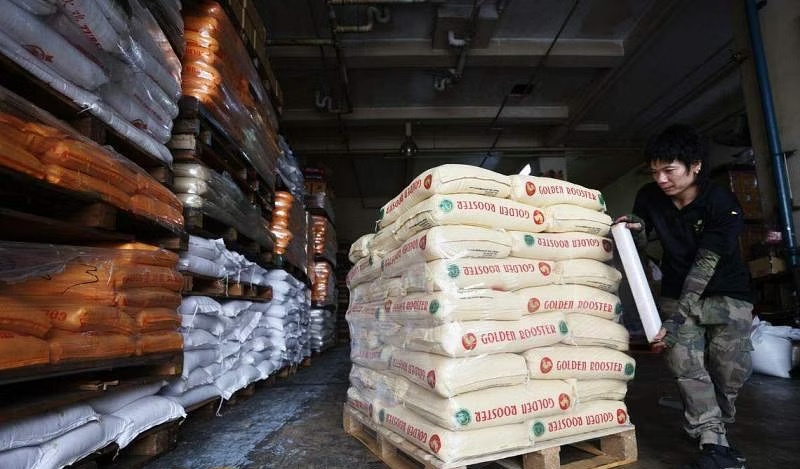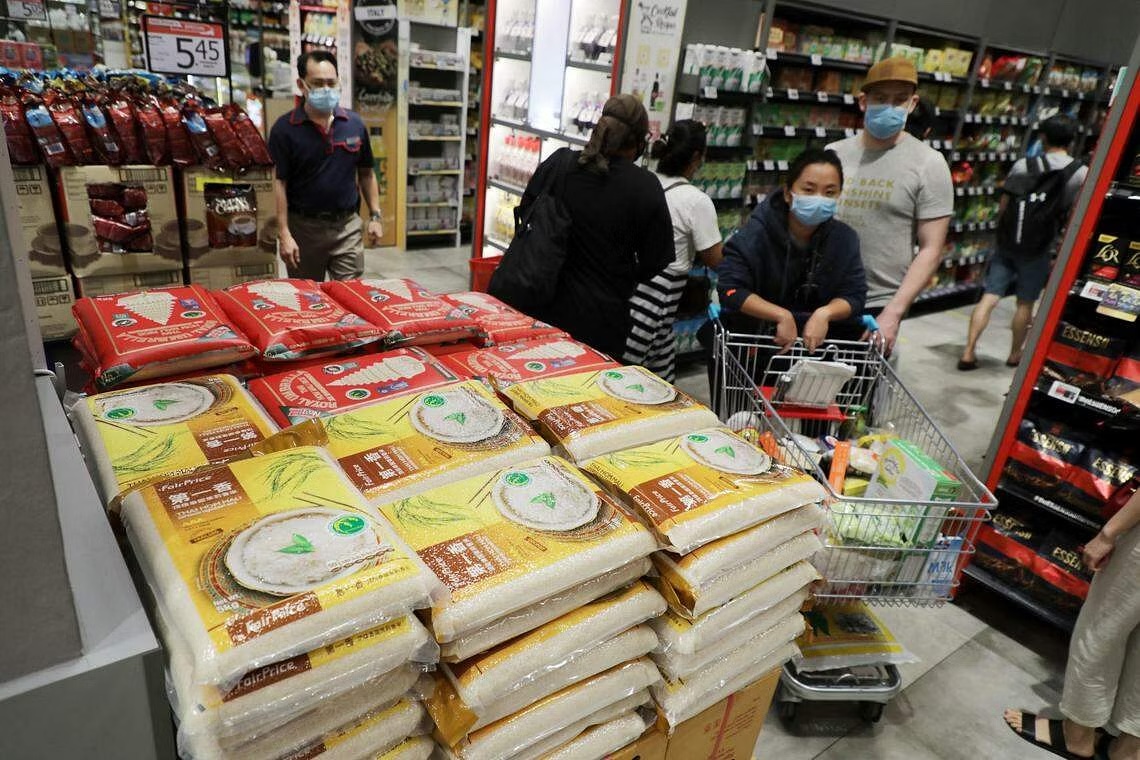Get ready to finally go on that low-carb diet you’ve been putting off—the price of white rice in Singapore might increase by up to 10% this month.
Here’s why.
Prices of Rice in Singapore Might Increase By Up to 10% Due to India Rice Export Ban
Are you a noodles person or a rice person?
Well, if you’re a rice person, too bad; you probably should start gaslighting yourself into preferring noodles soon unless you’re comfortable with the possibly upcoming price hike for white rice in Singapore.
According to Lianhe Zaobao, local white rice prices may rise by up to 10% this month. (emphasis on may, please don’t POFMA us; Goody Feed’s Blue Cats need their ngoh hiang)
To be fair, 10% is not that significant, but in this economy, everything counts lah.
But why exactly might the price of white rice rise? Well, you can thank (or blame) India’s export ban.

Over the past month, the world’s largest rice exporter, India, has announced a series of restrictions on rice exports. This is for various reasons, ranging from political reasons like the Russia-Ukraine war’s disruption to fertiliser supply, or climate change—don’t worry, it’s not because India can’t keep up with the rate at which Singaporeans consume rice.

And India isn’t the only nation imposing rice export bans. Myanmar is too.
Logically, the export bans reduce the supply of rice in the market. If you paid attention in Economics class, you would know that this means prices are bound to rise.
And it’s already happening.
In Asia, rice prices broke a 15-year record last Wednesday (30 August) after other rice-producing countries like Thailand and Vietnam drove up the prices of their rice.
According to interviews conducted by Lianhe Zaobao, prices of Thai fragrant rice have risen by nearly 20% compared to August 2022. Prices of ordinary-grade white rice have also seen price hikes of over 50%.
Now, for the line that will have you looking at your bank balance and rethinking whether you should have cai png for dinner tonight: Singapore imports 90% of its white rice from Thailand and Vietnam.
So, if rice importers bear these extra costs, then logically, these costs may be passed down to consumers like you and me. This means rice might become more expensive.
Like that, then how? Hole in wallet or hole in stomach?
Yet, this is far from the end of the problem. Cambodia, Vietnam and Thailand, three rice-producing countries entering the rice harvesting season this month, are struggling to produce enough rice.
Cambodia and Vietnam, thanks to the dry weather resulting from the El Niño phenomenon, and Thailand, thanks to the ongoing drought.
You know the drill: lower supply, higher prices.
It also doesn’t help that Thailand and Vietnam have not announced their October rice prices—this makes it difficult for rice importers, including those in Singapore, to ascertain how much rice to import.
It’s sort of like checking out your Shopee cart not knowing the price—you probably wouldn’t do it for fear of the damage your bank account would suffer. If you would, you should probably sign yourself up for a course on financial responsibility.
Not the First Time Prices of Rice Have Been Fluctuating
If it offers any comfort to you, this is not the first time rice prices have been fluctuating the way they are now.
In 2008, we saw the prices of white rice go through their very own “ups and downs” after India and Vietnam announced a white rice export ban.
Huh! Not enough rice, then how?
Panic buy lor. End up drive rice prices up and down and up and down.
During this 2008 “rice shortage”, Thai rice prices soared from US$300 per ton to US$1,200 per ton, then back to US$500 per ton.
Let’s hope the havoc wreaked on rice prices in 2008 won’t repeat itself this time.
So… Is it Confirmed That the Prices of White Rice Will Increase?
In fact, local rice importers interviewed by Lianhe Zaobao seem pretty hopeful that prices of white rice will remain stable despite the abovementioned considerations.
The reason? Because Singapore has more than enough “reserves” of white rice, the lower rice supply in the international markets won’t affect us.
The way it works is the same way that Singapore’s reserves work—you know, the usual “reserves” we think about when we mention the word.
It’s essentially a Plan B but for rice lah.
Further, Singapore and Thailand are kakis when it comes to rice. Thailand has never once stopped exporting white rice to Singapore, and it appears that even with the devastating impact of India’s export ban on the international rice market, Thailand will continue exporting rice to our little red dot.
If you’re still unconvinced, even the Singapore Food Agency has shared that Singapore’s rice supply is “currently stable”, given that our nation imports rice from over 30 countries.
And if our rice supply is secure, prices of white rice might not increase after all (but don’t get too happy; it’s Singapore, so they likely won’t drop either).
And that’s also what you’ll see if you take a trip down to your supermarket downstairs. You’ll notice that prices of white rice remain relatively stable.

Even spokespersons from Cold Storage and Giant have stated that prices of white rice at these supermarkets are unlikely to increase for now.
So, if the auntie at the chicken rice stall is marking up her prices and citing the India export ban as the reason, it’s time to call her out.
Thus, it appears that prices of white rice might not increase after all. In the worst-case scenario that the rice supply chain is disrupted, the government will do its utmost to minimise the impact.
Regardless, the government can only do so much lah. So just be prepared to buy cai png without the png if rice prices do increase.
And remember not to run out to supermarkets to hoard rice if rice prices do increase—rice generally only lasts a maximum of six months anyway.
Would you be jailed for being half-naked in public? Well, the answer will shock you. Seriously. Watch this to the end and you'll understand:




